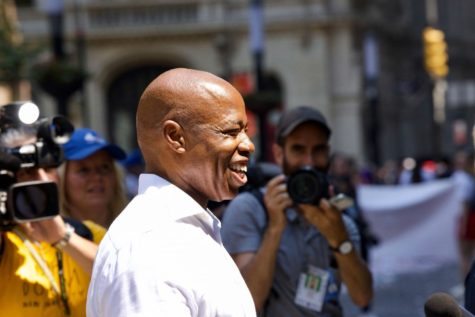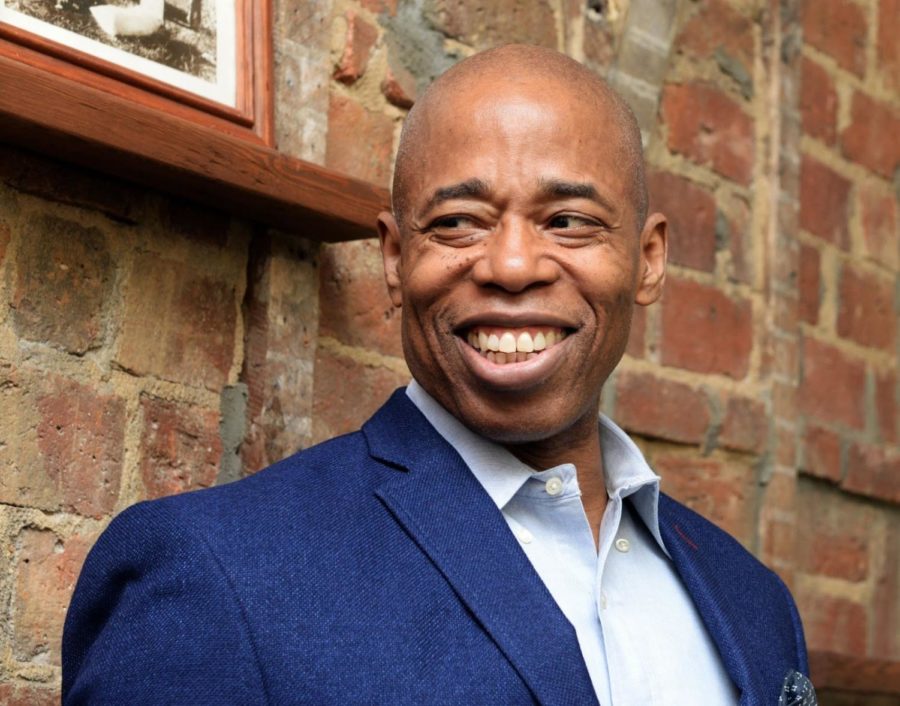From D Student to Dean’s List: Eric Adams’s Mayoral Debut and the Changes That He Plans to Bring to Post-COVID New York City
Eric Adams is now the 110th Mayor of New York City as of January 1st, 2022. There is much on his agenda that he wants to complete.
Krystalb97, Wikimedia Commons / Creative Commons Attribution-Share Alike 4.0 International license
Mayor Eric Adams’ proposal for increased education in New York has been in the making for a long time. He wants New Yorkers to place an emphasis on learning and believes that creating a community to do so will encourage change.
Eric Adams is a name you have probably heard for the past few years. While he was formerly the Brooklyn Borough President and is currently New York City’s Mayor as of his swearing-in ceremony on January 1st, 2022, his impressive civil involvement in New York City has spanned multiple decades.
Born and raised in Brooklyn, Adams’s youth is a motivating tale of sorrow to success that proves the value of second chances. He recalls that while growing up in a low-income household, there were times where the responsibility of supporting his family fell onto him and his brother. “I was so frustrated all the time,” Adams stated, a sentiment shared by numerous young people in New York.
Personal encounters with the police motivated Adams to pursue civic duties. He received his Associate’s and Bachelor’s Degree from the New York City College of Technology and John Jay College of Criminal Justice; he pursued a Master’s Degree in Public Administration from Marist College. Despite Adams’ educational accomplishments, the journey was not easy.
Adams barely passed his classes during his elementary, middle, and high school career, frequently receiving grades of C’s and D’s. He felt unmotivated and isolated from his peers, who labeled him as slow; it was not until after high school that Adams found out he had dyslexia. He said, “I overcame a learning disability and went to college and was able to obtain my degrees. And now I will be the Mayor in charge of the entire Department of Education.”

His victory as the 110th mayor of New York City is “the proof that the forgotten can be the future.” And that was the basis of Adams’s mayoral campaign — to grant marginalized New Yorkers the platforms and support they need in order to improve their living standards.
Yet, how many of these promises will be fulfilled during his four year term? Adams wants the city to move forward, but that will require collaboration, which seems complicated to obtain amid tensions between the NYPD and other government offices. The root of Adams’s civic duty is with the NYPD, where he served for over two decades, rising to the rank of Captain and taking action during the 9/11 crisis. Still, divisive opinions about the COVID-19 mask mandate and vaccination status have strained the delicate relationship between the Mayoral office and the NYPD. The political differences have remained essentially unchanged with the Mayoral election results.
However, Adams hopes to revitalize the relationship between the Mayor’s office and the NYPD, which would fundamentally bring progress to his plans. As a previous police officer, Adams has experienced frustration against the Mayor’s decisions about policing methods. He understands that previous Mayors viewed the issue of city security as a political decision rather than one about civic duty. Adams hopes to reinstate those values in New York’s higher political offices and believes it will mend law enforces and officials’ connection.
He believes a significant change will bring reform is the reinstatement of plainclothes anti-crime units in order to decrease street violence. Adams finds that the inclusion of this unit will prevent crime in communities prevalent to violence while maintaining community connections. Those who are opposed to this proposal argue that anti-crime units historically created more problems, such as increased fatal shootings; however, Adams will attempt to elevate the city’s response to crime.
Adams has also made it clear that all five boroughs are in dire need of attention due to their incarceration rates and equity in education. He has found the connection between maleducation and youth incarceration to be alarmingly correlated. In Adams’ victory speech, he said, “How come we’re not focusing on those children with dyslexia, learning disabilities? We should be testing them periodically. That feeds our prison population. Fifty-five percent of Rikers inmates have learning disabilities.”
Others recognize Adams’ concern. Griffin Dugger-Ades ’22, similarly finds current distribution of funding for education to reflect an alarming disparity. “I’d much rather [there be] funding for test prep for underprivileged kids. Offer city-wide free test prep,” Dugger-Ades said.
Adams plans to incorporate aid to schools that previously lacked the funding to assess students and give them the chance to enter Individualized Education Programs (IEP) and 504 programs. For many students, this would give them opportunities to pursue higher education, which would allow them to become more financially secure adults. The cycle of poverty can be broken, and Adams aims to help those willing to break out of it.
With his new position as Mayor of New York City, Adams has the invaluable opportunity to provide those in a similar situation as he once was with the support that they need to succeed — the possibilities are endless.
As for the future of New York City and its reforms, all will be revealed in the first few months, now that Adams is mayor as of January 1st, 2022. The decisions and causes that he supports could very well alter the city. It’s time for New York to be tough and to face the challenges of tomorrow.
His victory as the 110th mayor of New York City is “the proof that the forgotten can be the future.” And that was the basis of Adams’s mayoral campaign — to grant marginalized New Yorkers the platforms and support they need in order to improve their living standards.
Camila Kulahlioglu is an Editor-in-Chief for ‘The Science Survey.’ She hopes that her writing will inspire her peers to find new literary passions...

